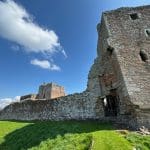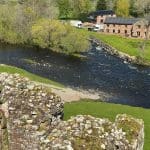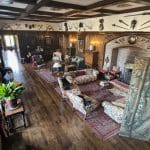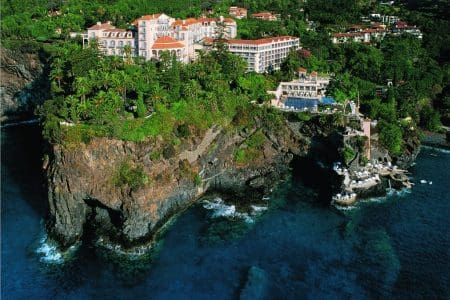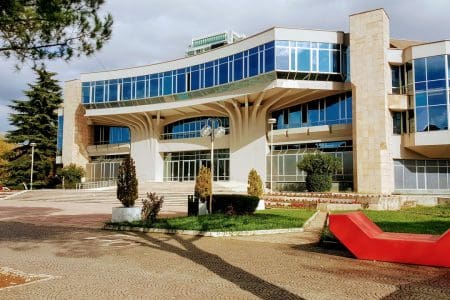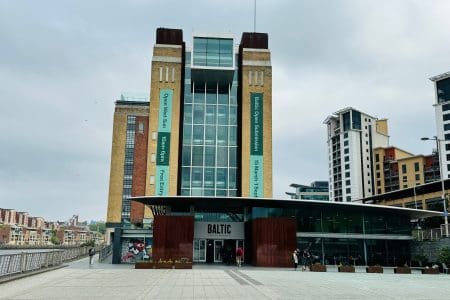Mark Bibby Jackson leaves Lake Ullswater to visit three castles of Cumbria – Brougham Castle, Lowther Castle and Hutton-in-the-Forest, as well as Rheged.
“The river used to mark the border between England and Scotland,” Denise Gallagher informs me pointing to the bridge next to where I have just parked.
Brougham Castle
Brougham Castle is one of four sites suggested on an itinerary devised for me by Visit Lake District. I almost skipped it as we were running short of time for our lunch at Rheged. It would have been a massive shame.
Denise is its most helpful site manager. She explains the river Eamont used to divide England and Scotland until 1092 when William II made inroads towards Carlisle. Before that Brougham used to be a Roman fort (Brocavum) on the York to Carlisle road. Denise says that much of the site is still unexcavated, and indicates where the fort was situated on a photograph in the small museum beside her ticket office. Much of the museum is devoted to Lady Anne Clifford who was quite a big thing in these parts, and died here.
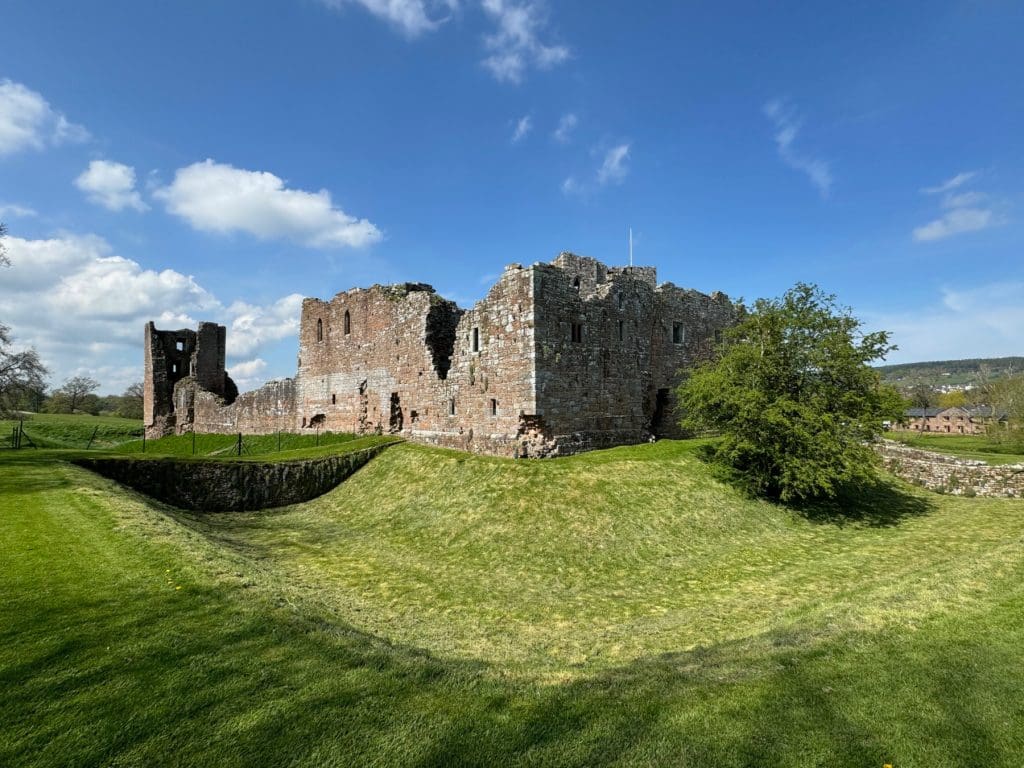
Following Denise’s advice, I walk up the 60-something steps of the castle keep, built towards the end of the 12th or beginning of the 13th century. From here I can look across the river into ‘Scotland’.
It is a great view, one which the soldiers garrisoned here to prevent the invading Scots might not have appreciated.
If you like your castles to be perfectly preserved and filled with priceless antiquities, then Brougham is not for you, but if you prefer ruined castles in beautiful locations that reek of history then I suggest you include a visit to Brougham on your trip through Cumbria. I’m certainly glad I did not skip it.
Lowther Castle
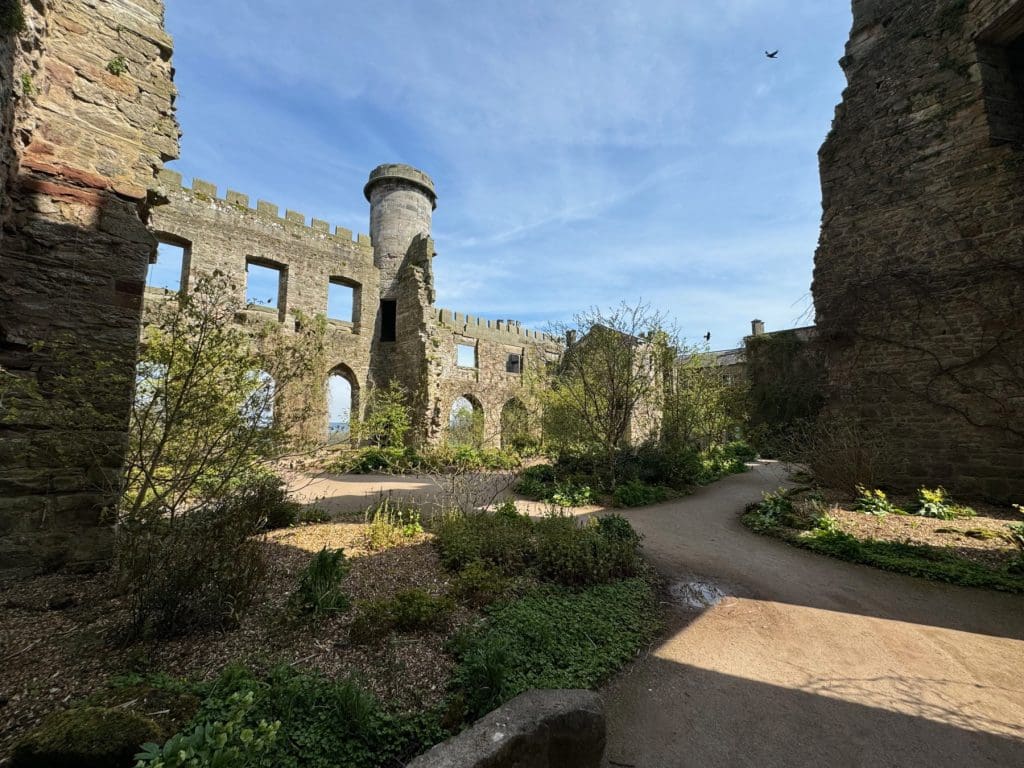
Brougham is the middle of three castles in my heritage trail through Cumbria. The first was Lowther Castle, which was originally a 11th century castle. Quite what it is now I am not sure.
Mary Queen of Scots visited Lowther Hall in 1568. A major fire destroyed the castle in 1718 with a new house being built at the start of the 19th century. However, this was partially demolished in the mid-1950s when the owner James Lowther faced with spiralling debts believed the property to be too much of a burden. Pigs used to run around its ruins and everything was left to muck.
In 2000, work started on the clearing of the gardens and restoring some of the castle site, opening to the public in 2011. So, in effect Lowther now stands as a ruined castle with beautiful gardens, including some wonderful Yew trees and a Japanese Garden.
From the car park you enter the museum which has an exhibition on the history of the property as well as the Lowther family, before exiting into the gardens to the rear of the castle ruins.
There is also a lovely courtyard ideal for sipping tea and munching cake, as well as extensive grounds popular with local walkers and wellness practitioners, judging from our visit.
Rheged
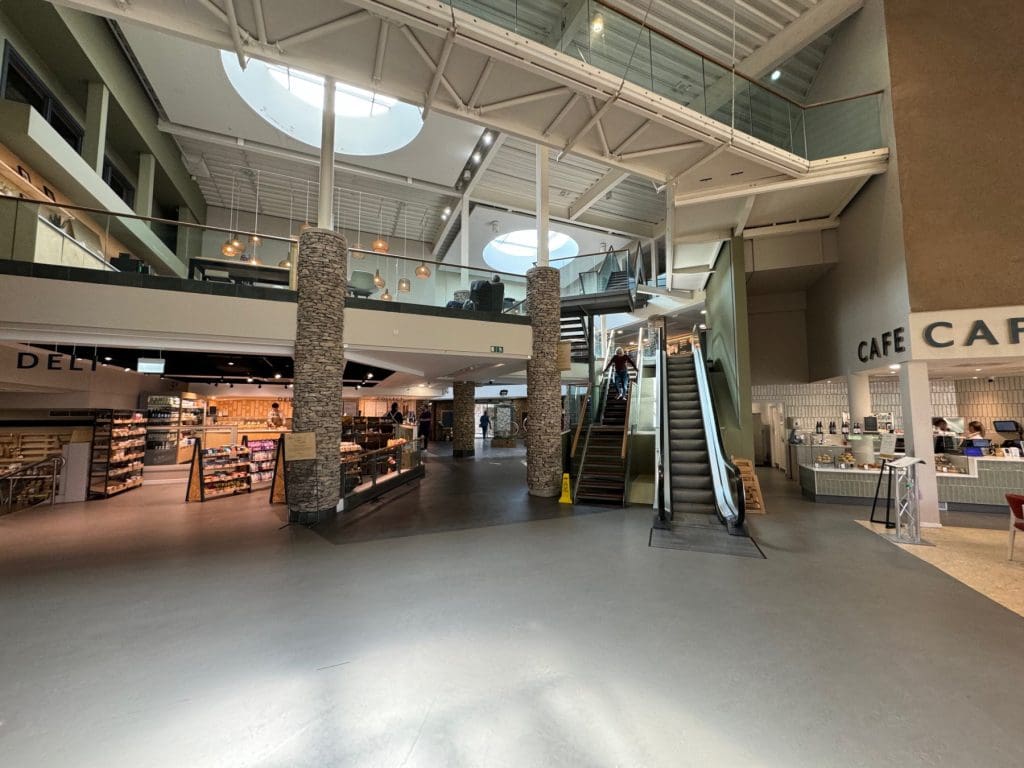
Lowther Castle is a short drive from Pooley Bridge, which we had visited the previous day on our boat trip around Ullswater Lake. Brougham Castle is about a ten-minute drive from Lowther and Rheged a few minutes from Lowther. It is easy to combine all three sites in a drive, and if you have more time, you can probably cycle instead.
Rheged is a wonderful project which has its heart very much in the local community. The complex has lots of retail outlets including pop up stores that sell local products, and lifestyle and wellness good. It also contains two cinemas including the largest screen – the size of four double decker buses – in Cumbria.
They run creative classes and workshops involving local craftspeople and artists. One of their projects is organised with local schools with the aim of painting a white pony on the nearby hills. They also work with the organisation Growing Well which provides specialist mental health interventions.
Upstairs there is a pop up print shop of local artist Libby Edmondson, which allows visitors to take away one of her very colourful prints of the Cumbrian countryside as well as a large exhibition space.
We have a lovely lunch in the cafeteria downstairs consisting of a tasty vegetable soup made with white onion and a quiche. My companion had an excellent rose wine while I stuck to the water as I had more driving ahead.
Hutton-in-the-Forest
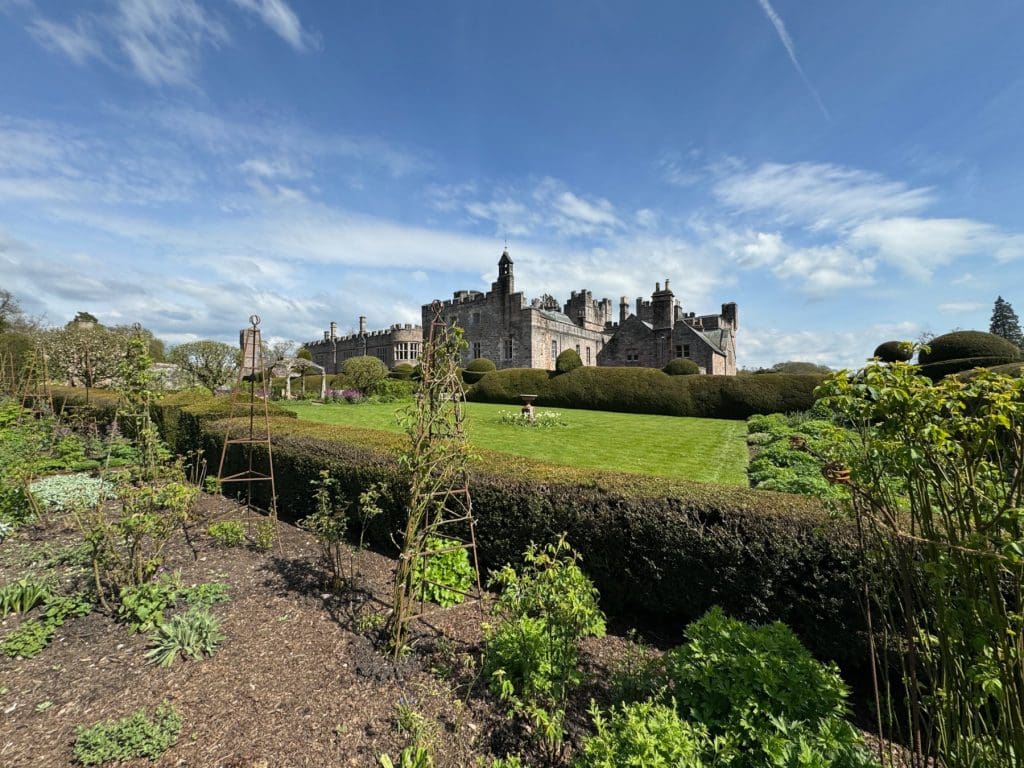
Our third castle, Hutton-in-the-Forest, is about as far removed from Brougham Castle as 13th century castles can be.
The original part of the castle was the Peel Tower which is where the de Hoten (hence Hutton) family kept their weapons while guarding the king’s forest. This was extended in 1630 and again in the 1740s, with further additions including its glorious castellations in the mid-19th century.
Hutton-in-the-Forest has been the property of the Inglewood family since 1605. Lord and Lady Inglewood still live here, and their son Henry held his wedding reception at the castle the weekend before my visit.
The slightly eclectic nature to the artwork in ancient rooms, some of which are quite modern, reflects Lady Inglewood’s taste. As my guide Pauline explains, this shows it is a living home.
Despite the family still being in residence, much of the building is available to be viewed including the family’s priceless selection of pottery in the Long Gallery, and beautiful tapestries some of which were woven in the 17th century. The late Queen Elizabeth II dined here in 1999 with Prince Phillip.
I love the original William Morris wallpaper which can be found in many of the rooms, including his first design ‘Trellis’, as well as the Cupid rose in the room of the same name created by Joseph Rose in the 1740s. Apparently, the term Rose is named after him. There is also an original Hogarth in the same room.
The property is as famed for its gardens and surrounding forest as for the building. The walled garden is particularly spectacular.
If you have time, you can spend hours drifting around the woodland walk and down to the lake, although there is a fee to visit both garden and the home.
I ask Pauline whether she thinks the building or the gardens are the bigger draw. Her response is beautifully equivocal, “The gardens are stunning but nobody would come here if there was a 1960 bungalow.”
In return, she asks whether it is confusing visiting three castles in one day. My reply is immediate and surprisingly honest. The castles are all so different that differentiating between them is easy. Three Cumbrian castles in one day; a wonderfully surprising day-trip on my way from the Lake District to Newcastle, and one I highly recommend.
Three Castles of Cumbria Photo Gallery
Brougham Castle
Brougham Castle is managed by English Heritage and open daily from 10am to 5pm. Tickets are from £7.70 available here.
Lowther Castle
Is open every day except Christmas Day from 10am to 5pm in the summer and 4pm in the winter, last entry one hour earlier. Day tickets cost £15 and are available here. An annual pass costs £45.
Rheged
To discover what is currently on show at Rheged, click here.
Hutton-in-the-Forest
The House is open on Wednesdays, Thursdays, Sundays and Bank Holiday Mondays from 11am to 4pm (last entry 3pm), by guided tour (£14). The Gardens & Woodland Walk is open daily (not Saturdays from 10am to 5pm), for £9, children (under 16) free.
More Things to Do in Cumbria
To discover the many wonderful things to do and places to see in Cumbria, go to the official Visit Lake District website.
All images (except video) Mark Bibby Jackson.
